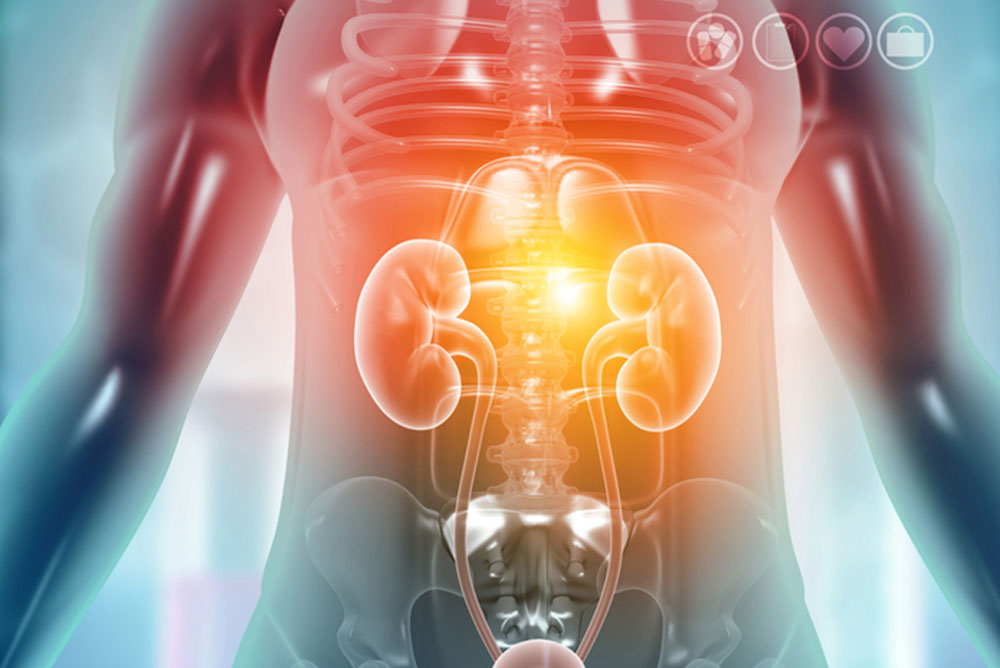
“THE AMOUNT of acute injury and failure was unexpected and dramatic [in the kidneys, due to Covid-19 infection],” Yale University kidney specialist Alan Kliger told the Philadelphia Inquirer. The highest numbers of Covid-19 cases involving kidney damage come from the Northeast, where rates of infections spiked early compared to other parts of the country. These were affected later in the spring when physicians had more experience dealing with the virus.
The kidneys recover in most patients with Covid-related damage, but some require lifelong dialysis—using a machine to replace healthy kidney functions of filtering waste and rebalancing the body’s fluids. Even those who recover from acute kidney injury are at higher risk for developing chronic kidney disease later on.
Kidney damage—in patients with severe disease as well as for Covid “long haulers” whose symptoms persist —is just one of the warnings that this coronavirus could remain risky and worrisome until a vaccine becomes widely available. Several next-in-line candidates have two important advantages—requiring only one dose and not requiring extreme cold-chain (from manufacturer to pharmacy or clinic to patient) temperatures—compared with the earliest versions now in large-scale clinical trials. Maintaining temperatures of minus 80-95 degrees necessitates specially designed units for transport and storage and makes it difficult to vaccinate geographically distant populations.
In the effort to relax restrictions, gyms and health clubs may have reopened too early based on flawed research that included conflicts of interest—sponsorship by industry trade associations—as well as reliance on contact tracing. While improving, contact tracing requires the participation of individuals who receive a positive Covid-19 test to quickly inform every place they’ve been— grocery store, library, gym, etc.— which can be difficult.
With asymptomatic transmission accounting for up to 50% of new cases, one strategy that has proven effective for reopening is “cocooning,” based on research in Austin, Texas. Extending the strictest regulations only to “vulnerable populations” (those over 65 and those with pre-existing conditions) involves supporting work-at-home and paid leave to facilitate self-isolation.
For Covid-19 “long-haulers,” acute kidney injury (AKI) has affected one in every three people admitted to the hospital with the coronavirus infection. Even younger, healthier Covid-19 patients who never needed a ventilator or the ICU have left the hospital with kidney damage severe enough to require dialysis for the rest of their lives or until they receive a transplant.
Dialysis helps keep kidney patients alive but impairs their health and reduces life expectancy: a 30-year-old patient on dialysis looks more like a 55-year old, says Kliger. While healthy kidneys work round the clock, most patients undergo dialysis only for several hours three or more times a week at a center. Even those with home units used overnight spend hours without the filtering and rebalancing done by healthy kidneys.
Kidneys are at risk in critically ill patients because the organs need strong blood flow, which diminishes with dehydration and low blood pressure. And blood pressure is difficult to control in the presence of breathing problems. Also damaging to the kidneys in Covid-19 patients are blood clotting and the inflammation that accompanies an intense immune response.
When the kidneys stop working, toxins build up, which can cause confusion and even coma, explained University of Pittsburgh nephrologist Paul Palevsky. And fluids accumulate in the lungs, causing shortness of breath; while higher potassium levels can cause severe heart-rhythm problems.
For most people with chronic kidney disease, the main causes are type II diabetes and high blood pressure. Next is glomerulonephritis —diseases that damage the kidney’s filtering units, the glomeruli, a cluster of tiny vessels with thin walls that enable waste and water to pass through but block the larger blood cells and proteins. Because early kidney damage often has no symptoms, signs include urine samples containing blood, hemituria or protein.
Filtered fluid passes next into the tubules, which rebalance minerals, water, salts and glucose for reabsorption into the blood stream. Compared to the filtering process, this recalibration is more challenging for dialysis machines—which sometimes do it so abruptly that the body requires hours to recover, explains Seattle nephrologist Jonathan Himmelfarb. Dialysis costs almost $100,000 annually for the more than half a million Americans who rely on this treatment.
Referring to kidney damage and other symptoms in long-haulers, Covid-19 expert Anthony Fauci told the New York Times, “These are the kinds of things that tell us we must be humble and we do not completely understand the nature of this illness.”
—Mary Carpenter
Well-Being Editor Mary Carpenter is on a mission to keep us updated on Covid-19. To read more of her posts, click here.

This is truly a devastating disease, with far-reaching and unknown long-term effects. The US response, or rather, lack thereof, has contributed to this. Thank you for an informative article.
Sadly we don’t know other long-term effects of Covid, particularly in young people.
Thanks for this very informative piece.
Excellent article, which increased my knowledge of the dangerous long-term effects of Covid.